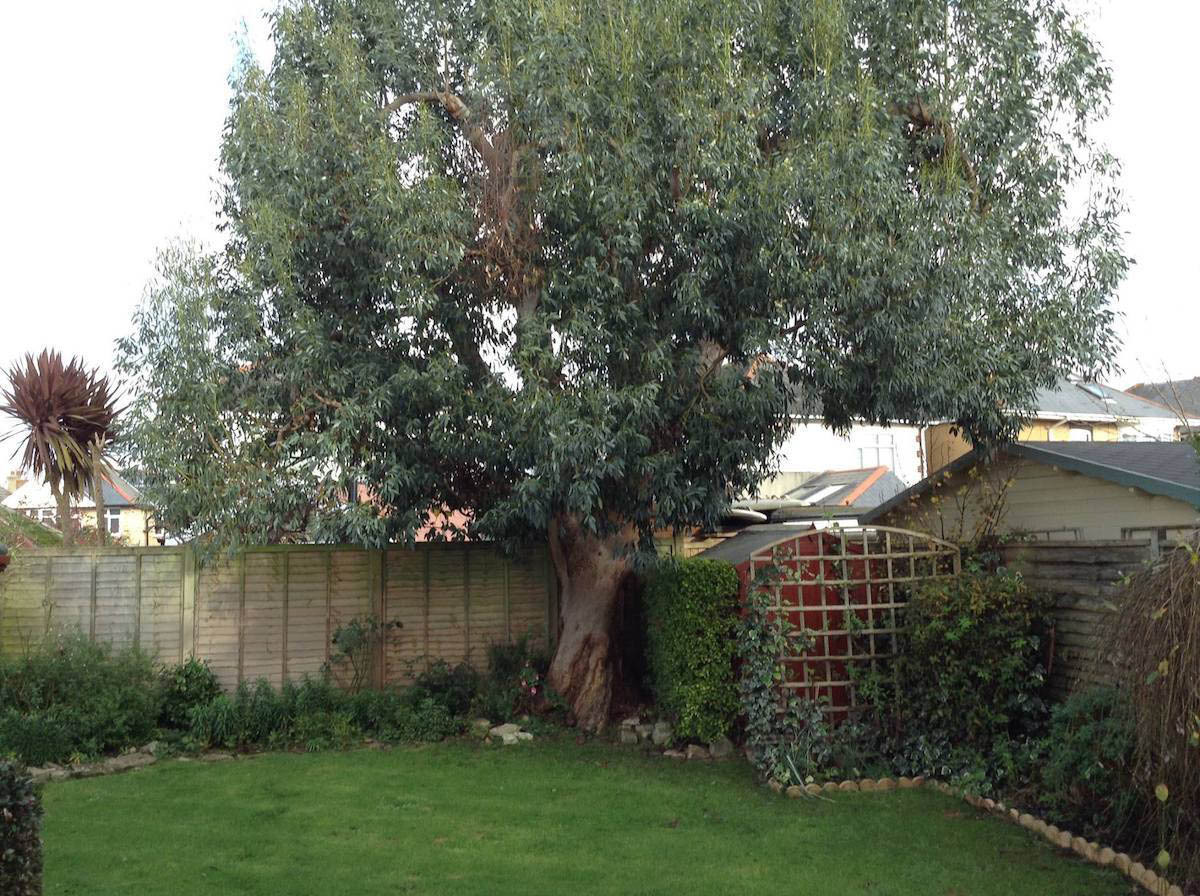
When news broke of the destruction of some 136 mature trees in central Plymouth in March 2023, I was unimpressed by reports of local council plans to replace them with semi-mature trees and claims of an increase in local biodiversity as part of the new development. I’m not knowledgeable about trees or arboriculture, but I have become something of an ‘expert by experience’ since moving to my current home in 2007. Tree replacement, I have discovered, is neither quick nor easy – whatever developers tell you.
The eucalyptus tree, in what was to become my back garden, was so large and splendid that it featured in the estate agent’s description of the property. It was not until I actually moved in that I realised just how useful it was for screening. Instead of seeing other people’s houses and gardens, the view from my bedroom window was one of peaceful greenery, swaying in the wind and alive with squirrels and birds. My new next-door neighbours told me it was known as the ‘Beaufort Tree’ in their household, after the wind scale. It was used by their (long since grown up and left home) eldest son, as a quick guide as to whether or not he should go sailing, or how far, from the nearby coast.
I soon discovered why the eucalyptus is known as a ‘gum tree’. When the tiny flowers opened in summer, they covered the garden in a sticky substance, with constantly dropping leaves (despite it being an evergreen) and strips of shed bark adding to the mess. A visiting Australian friend stared at it in amazement asking, “Is that a GUM tree?” Yes, I replied, don’t you like them? “Yes, of course,” she said, “But not in the back yard – far too dangerous!” Apparently, they drop their branches without warning – as I was soon to discover, when my end-of-the-garden neighbour came round to explain that he’d passed a very large branch, which had dropped on his side, back over the fence for me to deal with. But, like me, he really enjoyed the privacy and shade the tree offered.
My insurers were the next to raise a question when I was renewing my cover. “Do you have any trees taller than 30 feet high in your garden?”. Gosh. How do you know how tall a tree is? After staring at it for some days I decided that, as it was quite a bit taller than my two-storey house, it was probably over 30 feet in height. In that case, said the insurer, we will need an arboriculturist’s report: which was to give me the first signs of future problems.
The tree specialist came and, after a quick glance, said it was probably around 40-45 feet high (so the answer to how you know how tall a tree is: you ask an arboriculturist). Then he looked more closely, specifically at the trunk. “If this was in a children’s playground” he said “I would recommend taking it down immediately. It has honey fungus, which is weakening the trunk – and you wouldn’t want that to fall on your head. Or your house.” However, he went on to suggest that he could reduce the crown, bringing the height down to the level required by the insurance company, which would make it safe enough, for perhaps another five years.
So, the eucalyptus endured some major surgery – and the same, again and again, because trees regrow. Seven years later, it was due to be scalped for the fourth time. On each occasion, the bill of several hundred pounds increased from the time before. The patch of fungus on the trunk was visibly spreading, as was the worried look on the tree surgeon’s face at the prospect of this large tree remaining in situ. So, very reluctantly, I agreed that my lovely eucalyptus needed to go. I reminded myself about the mess it created on the lawn each summer, and how dry it made the whole garden. Still, I was very sad once it had been removed. It left behind a huge, traumatic space, revealing neighbours, houses and gardens, even across a road that I’d not previously been able to see (or be seen from).
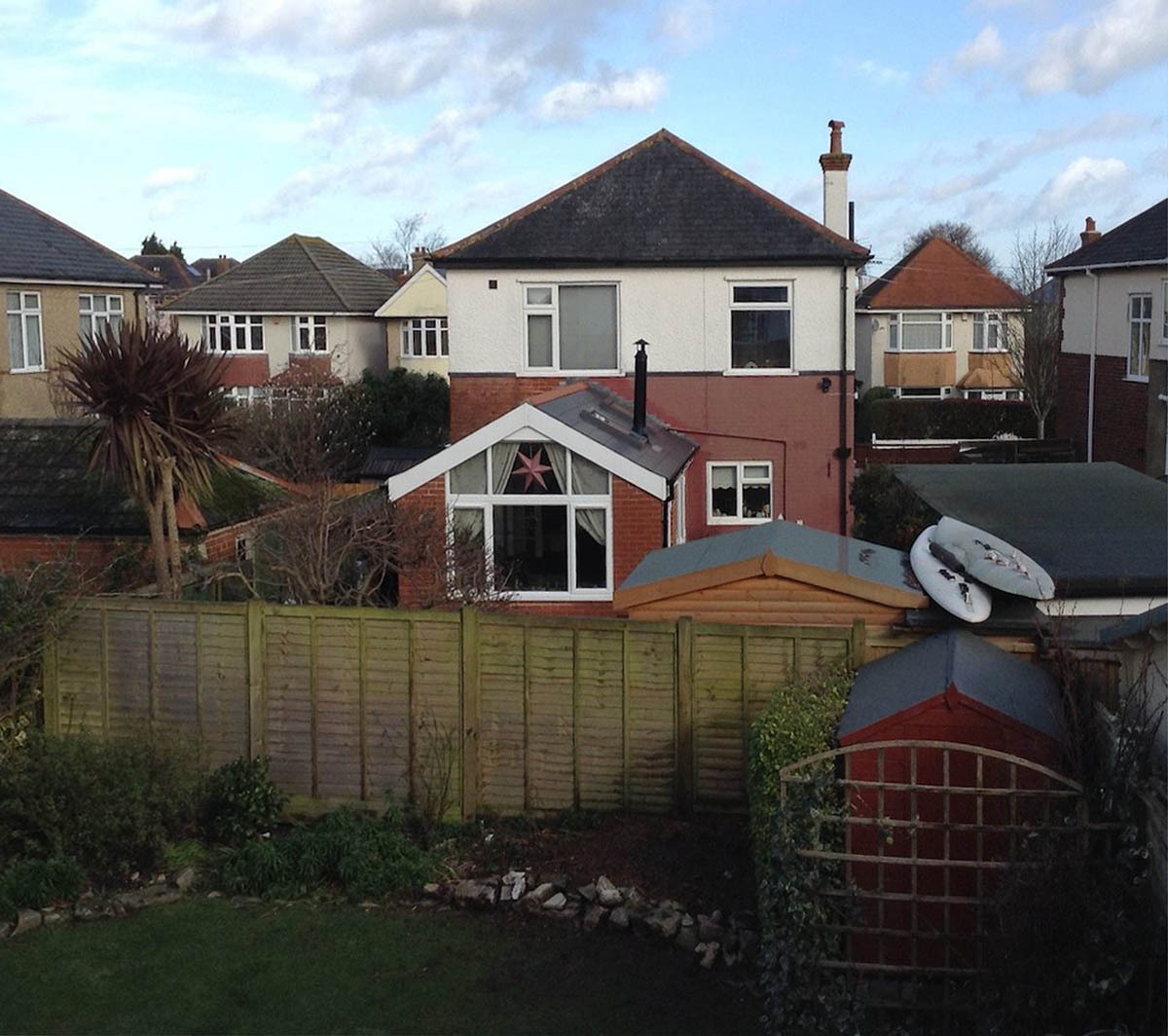
The impact on the local ecosystem was sudden and harsh. The birds disappeared overnight and, whilst some have returned, I’ve hardly seen a squirrel in the garden, in the seven years since the eucalyptus went. The lawn, and whole garden, was soggy for two years or more, as it settled into its changed environmental situation. And after a few months, mice – I presume, displaced from their former garden home – took up residence in my house. Evicting them took two years, four different pest control firms and several large bills, including for repointing, replacing chewed and leaking dishwasher hoses and fixing mouse-proof covers over all the air vents. In the meantime, following some weeks of deliberation and poring over websites, I decided to take the advice of the tree surgeon and plant a mimosa (acacia dealbata) to replace the old eucalyptus.
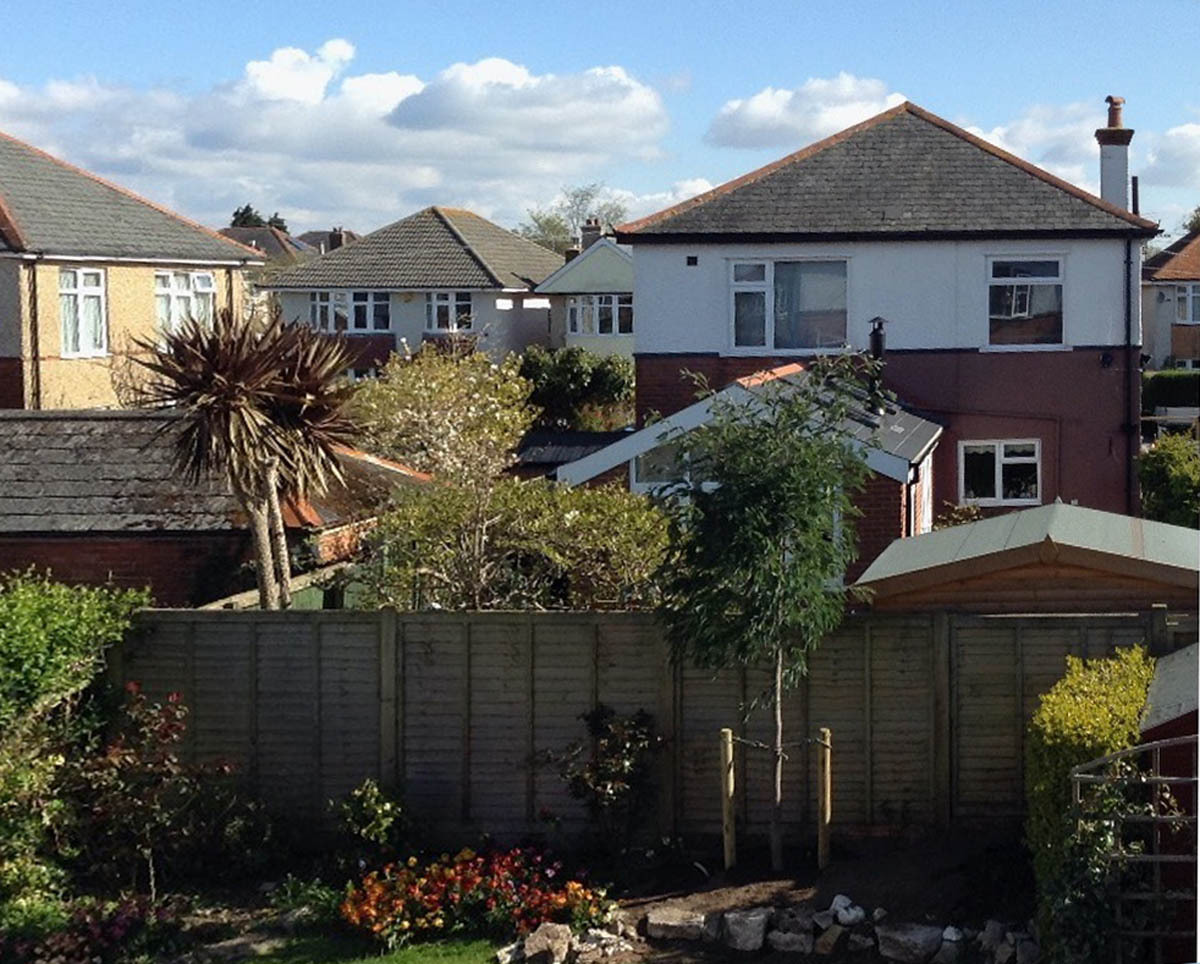
Planting instructions were complex and pricey, including removal and replacement of a large area of existing topsoil, due to the possibility of honey fungus spores remaining in the earth, even though the mimosa is said to be relatively resistant to the infection. Despite the expense, I invested in a semi-mature tree, with a trunk size of 16-18 cms: that, I discovered, is the key measurement, rather than its height. I was delighted with the immediate appearance of the tree. Once it was in position, I was no longer looking into my neighbour’s garden room, on opening my bedroom curtains each morning. Even so, it was clearly going to be many years before the mimosa would begin to rival the screening potential achieved by my former eucalyptus tree.
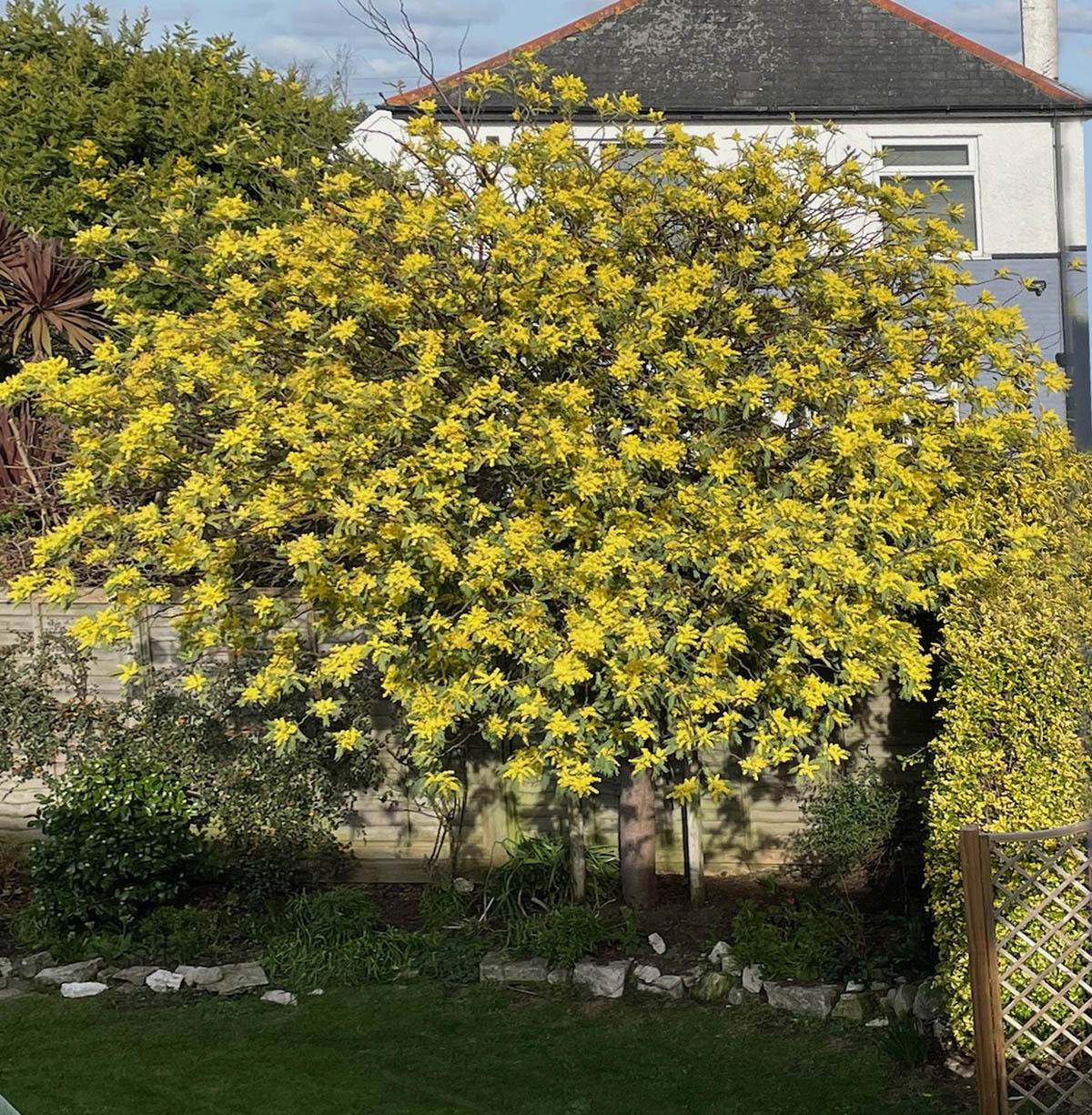
True to its promise, the mimosa grew rapidly, flowering the very next winter and increasing the size of its crown annually. As it developed, it was a glorious sight in full bloom in mid-winter, with the tiny yellow flowers providing my own mini-sun in the garden on gloomy days. It was not to last. On February 18, 2022, Storm Eunice roared across the country, with a record-breaking wind of 122 miles per hour verified at the Needles, Isle of Wight, shortly before 11.30am. The storm sped across Poole Bay, hitting Bournemouth, my garden and my poor, beautiful mimosa tree very shortly after. It was not salvageable – my only consolation was that it was still small enough to fall entirely on my lawn and not cause the huge damage that would have ensued had it been the massive, old eucalyptus that had blown over.
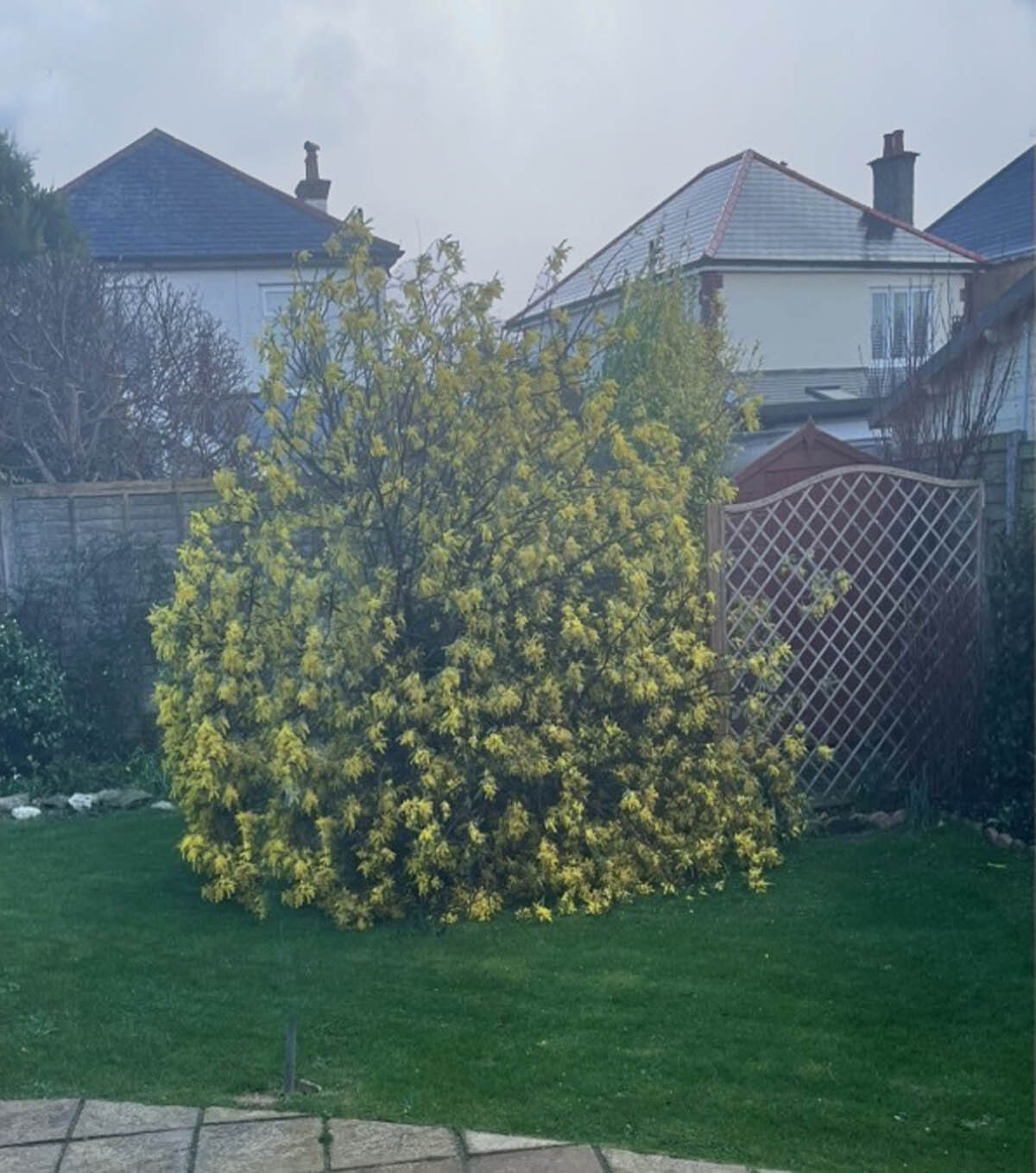
Back, almost, to square one. At least I knew more about replacing trees than I had a few years earlier. But, as I had spent so much on the mimosa for it to last only a few years, I decided to be thriftier and more patient this time, and buy a younger tree of the same type. In some ways, I wished I’d not been so mean. Once planted, it seemed very puny in comparison to my earlier purchase.
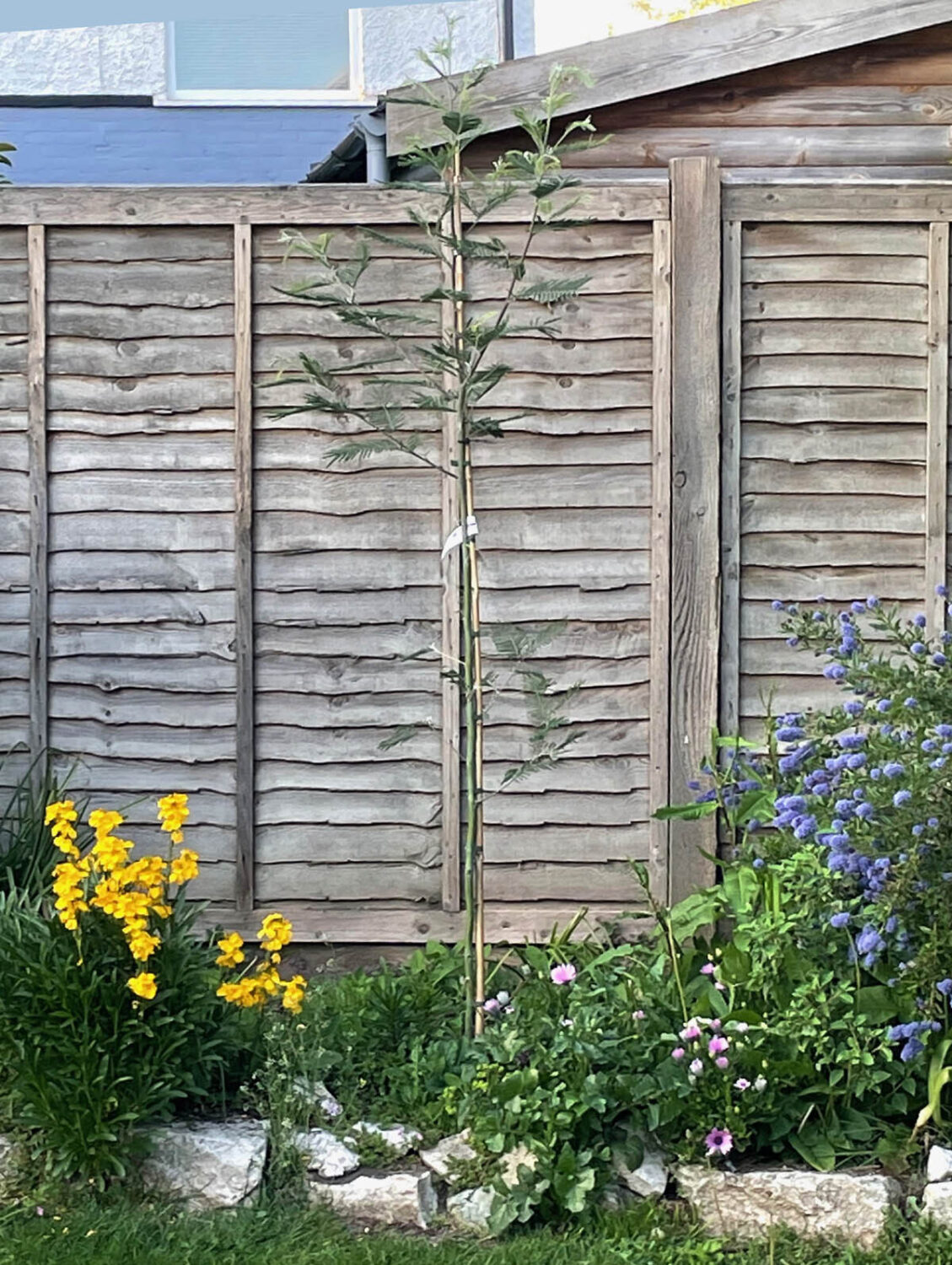
The tree seemed to get off to a great start, growing well throughout the summer. However, mimosas are not fully hardy, so the frosty winter of 2022-23 was to be a challenge for my new, young tree. In December, the first cold spell started with (for Bournemouth) some exceptionally cold nights, falling to minus seven or eight degrees over a period of several weeks. After one such freezing night, I came downstairs in the morning to find the poor tree almost weighed to the ground with icicles on its delicate fronds. Perhaps, if it had been a bigger tree, it would have been more difficult to get a proper ‘plant fleece’ to fit. As it was, with some quick internet shopping, speedy delivery and the help of a tall grandson, my baby mimosa was soon tucked up in a large fleece bag complete with zipper and drawstring – not forgetting some additional mulch to keep its roots warm. The tree survived the winter, although it lost its central branch and the tips of some others, effectively losing a whole season of growth and potentially changing the shape of the crown.
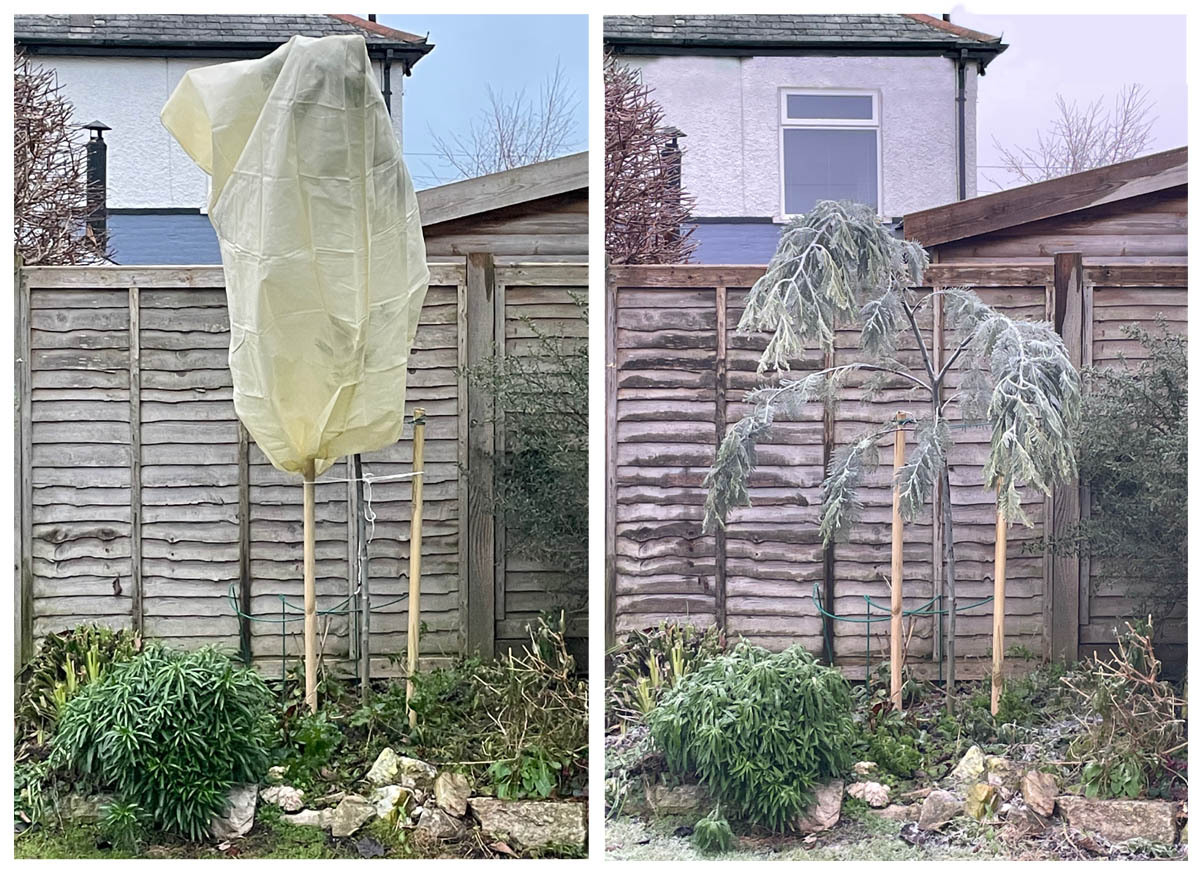
It is clearly going to be several years before my mimosa sapling grows to the size of the one it replaced, and my house and garden had begun to feel very overlooked again. It is never likely to be large enough to achieve the screening achieved by my long-lost eucalyptus, either. However, the small shed in the corner of the garden was becoming somewhat rickety, so I decided to remove it and plant a second new tree there. Back to the websites and decision time again. This time, I opted for an amalanchier grandiflora, also known as a Juneberry. Once again, I chose to buy a semi-mature tree, hoping its sheltered spot will protect it from any passing storms!
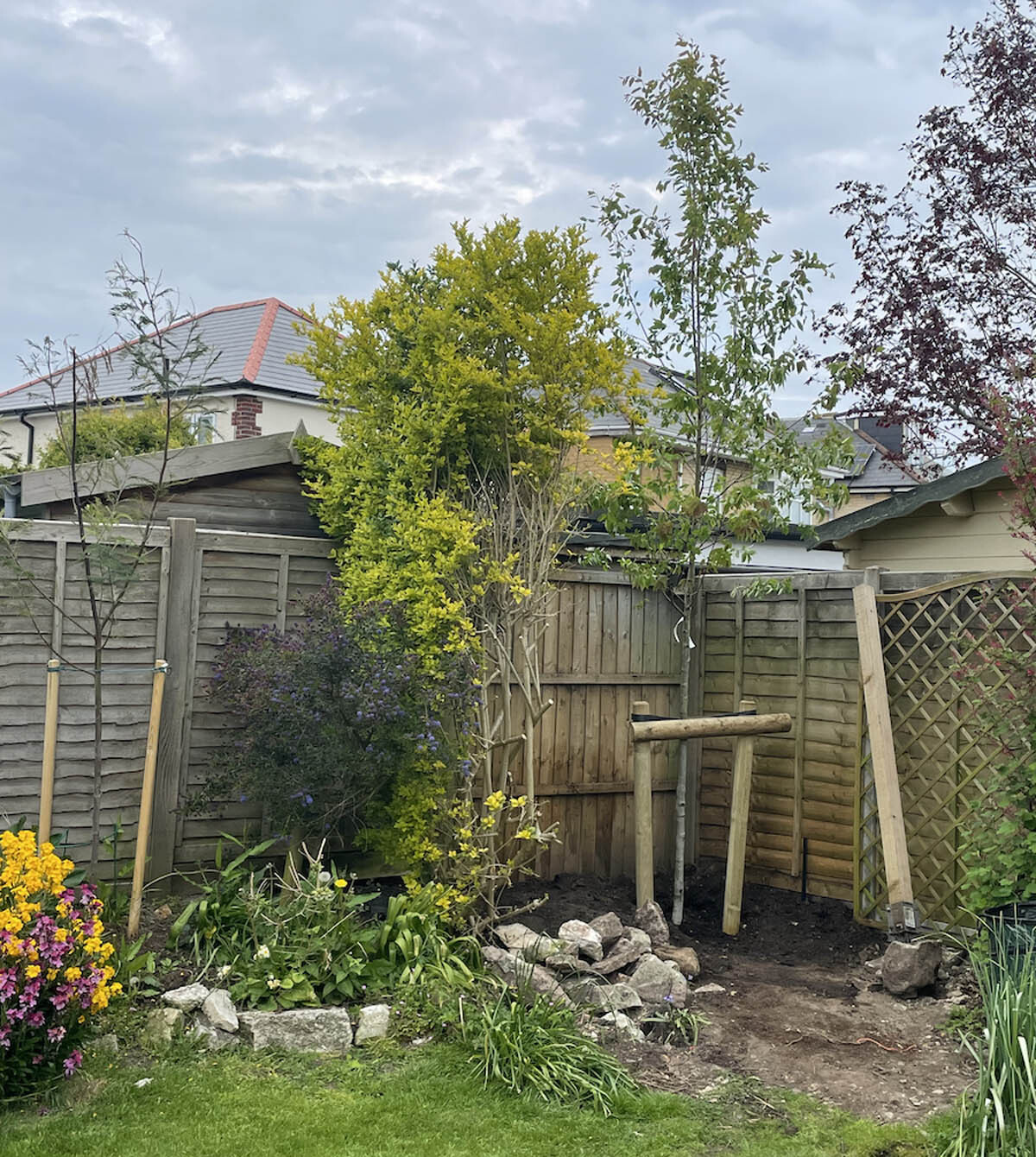
I am fortunate to have a garden large enough to support a choice of trees and associated wildlife, and I freely admit that all of this has been a learning experience for me. Probably, developers and local authorities employ professional gardeners and tree specialists to advise on their plans. Even so, the next time one of them claims, in passing, that they will replace axed mature trees with semi-mature ones, and that that will increase local biodiversity, I hope they will give some details, including a generous cost allowance and time frame.
Established, mature trees are a blessing in so many ways and replacing them is not as simple as they make it sound.




